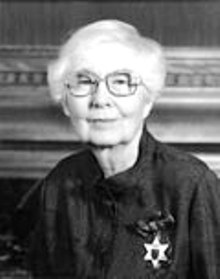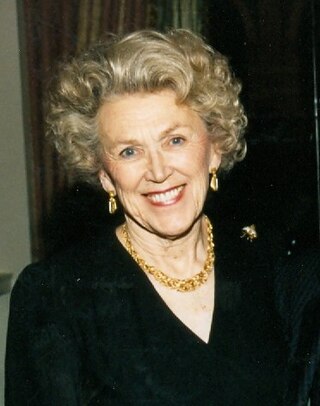Related Research Articles

Moose Jaw is the fourth largest city in Saskatchewan, Canada. Lying on the Moose Jaw River in the south-central part of the province, it is situated on the Trans-Canada Highway, 77 km (48 mi) west of Regina. Residents of Moose Jaw are known as Moose Javians. The city is surrounded by the Rural Municipality of Moose Jaw No. 161.
Music in the Canadian province Saskatchewan, one of the Prairie Provinces, includes a variety of genres including Indigenous music, folk, country, jazz, and classical traditions.

The Saskatchewan Junior Hockey League is a Junior 'A' ice hockey league operating in the Canadian province of Saskatchewan and one of nine member leagues of the Canadian Junior Hockey League.

The history of Regina, Saskatchewan, the capital of the Canadian province of Saskatchewan. Prior to the province's establishment, Regina served as the territorial headquarters of the then-North-West Territories and district headquarters of the territorial district of Assiniboia.
Highway 1 is the Saskatchewan section of the Trans-Canada Highway mainland route. The total distance of the Trans-Canada Highway in Saskatchewan is 654 kilometres (406 mi). The highway traverses Saskatchewan from the western border with Alberta, from Highway 1, to the Manitoba border where it continues as PTH 1. The Trans-Canada Highway Act was passed on December 10, 1949. The Saskatchewan segment was completed August 21, 1957, and completely twinned on November 6, 2008. The speed limit along the majority of the route is 110 kilometres per hour (70 mph) with urban area thoroughfares slowing to a speed of 80–100 kilometres per hour (50–62 mph). Portions of the highway—the section through Swift Current, an 8-kilometre (5 mi) section east of Moose Jaw, and a 44-kilometre (27 mi) section between the West Regina Bypass and Balgonie—are controlled-access. Highway 1 serves as a major east–west transport route for commercial traffic. It is the main link between southern Saskatchewan's largest cities, and also serves as the province's main link to the neighbouring provinces of Alberta and Manitoba.

Culture of Saskatchewan views the patterns of human activity in the central prairie province of Canada examining the way people live in the geography, climate, and social context of Saskatchewan.
Highway 39 is a provincial, paved, highway in the southern portion of the Canadian province of Saskatchewan connecting North Portal and Moose Jaw in the north. This is a primary Saskatchewan highway maintained by the provincial and national governments and providing a major trucking and tourism route between the United States via Portal, Burke County, North Dakota, and North Portal, Saskatchewan. On July 3, 2000, Highways and Transportation Minister Maynard Sonntag officiated at the ribbon cutting ceremony opening the new duty-free shop and the twinned highway at Saskatchewan's busiest border crossing. Highway 39 is one of Canada's busiest highways, facilitating transport for $6 billion in trade goods via approximately 100,000 trucks over the year. The entire length of highway 39 is paved. The CanAm Highway comprises Saskatchewan Highways Hwy 35, Hwy 39, Hwy 6, Hwy 3, as well as Hwy 2. 44.3 miles (71.3 km) of Saskatchewan Highway 39 contribute to the CanAm Highway between Weyburn and Corinne. Highway 39 is divided or twinned in two areas at North Portal as well as north of Weyburn for 1.7 kilometres (1.1 mi). The junction of Hwy 39 with the Trans–Canada divided four-lane highway is done via a "Parclo" or partial cloverleaf interchange.

Saskatchewan Soccer Association (SSA) is the governing body for soccer (Association Football) in the Canadian province of Saskatchewan. The association was formed in 1905.

Sports in Saskatchewan consist of a wide variety of team and individual games, and include summer, winter, indoor, and outdoor games. Saskatchewan's cold winter climate has ensured the popularity of sports including its official sport, curling, as well as ice hockey, ice skating, and cross-country skiing. The province also has warm summers and popular summer sports include baseball, football, soccer, basketball, track and field, rodeo, horse-racing, and golf.

Reta Cowley was a Canadian painter. She is known for her watercolors of the prairie country around Saskatoon, Saskatchewan, which capture the unique qualities of space and light.
Sybil Henley Jacobson, was a Canadian painter. Her oil and watercolor paintings of prairie landscapes, portraits, and still life are in a traditional style. Her work is largely found in private collections, but is also found the major collections at Norman Mackenzie Art Gallery, Moose Jaw Art Museum and National Exhibition Centre, and Nutana Collegiate. In 1929 she was one of ten founding members of the Women's Art Association of Saskatchewan.
Leesa Streifler is a Canadian multi-disciplinary artist and art professor who lives in Winnipeg, Manitoba. Her works have been exhibited extensively in solo and group exhibitions, nationally and internationally, and appear in the permanent collection of the National Gallery of Canada and the Canadian Museum of Contemporary Photography.
Lorna Muriel Russell is a Canadian artist, known for her distinctive prairie landscapes in watercolor, guache, and oil that interpret her home province of Saskatchewan.
Ellen Vaughan Kirk Grayson was a Canadian artist and educator. She was born in Moose Jaw, Saskatchewan but her time spent hiking in the Canadian Rockies and the Okanagan Valley has shaped her artistic style.
Honor Elizabeth Kever is a Canadian artist.
Barbara Barber FRSA (1873–1966) was a Canadian artist. Barber, along with Sybil Henley Jacobson and Harriette Keating was one of two of the founding members of the Women's Art Association of Saskatchewan. Barber moved to Regina with her husband in 1912. She trained in Toronto and was a Fellow of the Royal Society of Arts.
Judy Anderson is a Nêhiyaw Cree artist from the Gordon First Nation in Saskatchewan, Canada, which is a Treaty 4 territory. Anderson is currently an Associate Professor of Canadian Indigenous Studio Art in the Department of Arts at the University of Calgary. Her artwork focuses on issues of spirituality, colonialism, family, and Indigeneity and she uses in her practice hand-made paper, beadwork, painting, and does collaborative projects, such as the ongoing collaboration with her son Cruz, where the pair combine traditional Indigenous methodologies and graffiti. Anderson has also been researching traditional European methods and materials of painting.

Jacqueline Fanchette Clotilde Clay Shumiatcher, was a Canadian philanthropist, arts patron, and art collector. She and her husband Morris C. Shumiatcher began supporting the arts community in Regina, Saskatchewan, shortly after their marriage in 1955, an endeavor which she continued since Morris' death in 2004. The couple were avid collectors of Inuit art and artwork by local artists. In 2014 she donated 1,310 Inuit sculptures and paintings by the Regina Five, worth an estimated C$3 million, to the University of Regina. She received many honours and awards, including the Saskatchewan Order of Merit in 2001 and the Order of Canada in 2017.
References
- 1 2 3 Squareflo.com. "Saskatchewan NAC Articles | A History of the Regina Artist Guilds". www.sknac.ca. Retrieved 2017-03-03.
- ↑ Thompson-Golding, Emily. Women's Activity in the Regina Little Theatre Society, 1926 to 1960 (Master of Arts thesis). Faculty of Graduate Studies and Research, University of Regina.
- 1 2 "Women's Art Association". Saskatchewan Council for Archives and Archivists. Retrieved March 3, 2017.
- ↑ Henderson, Lisa G. (2014-11-17). "Some Early Women Artists in Saskatoon". earlysaskatchewanartinthenews. Retrieved 2021-04-23.